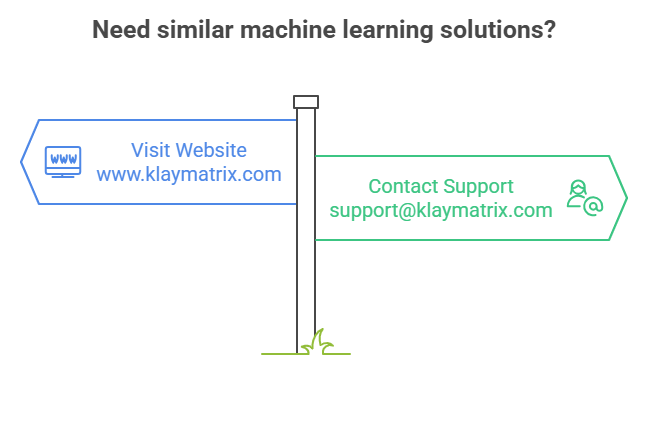Machine Learning Use Cases in Retail
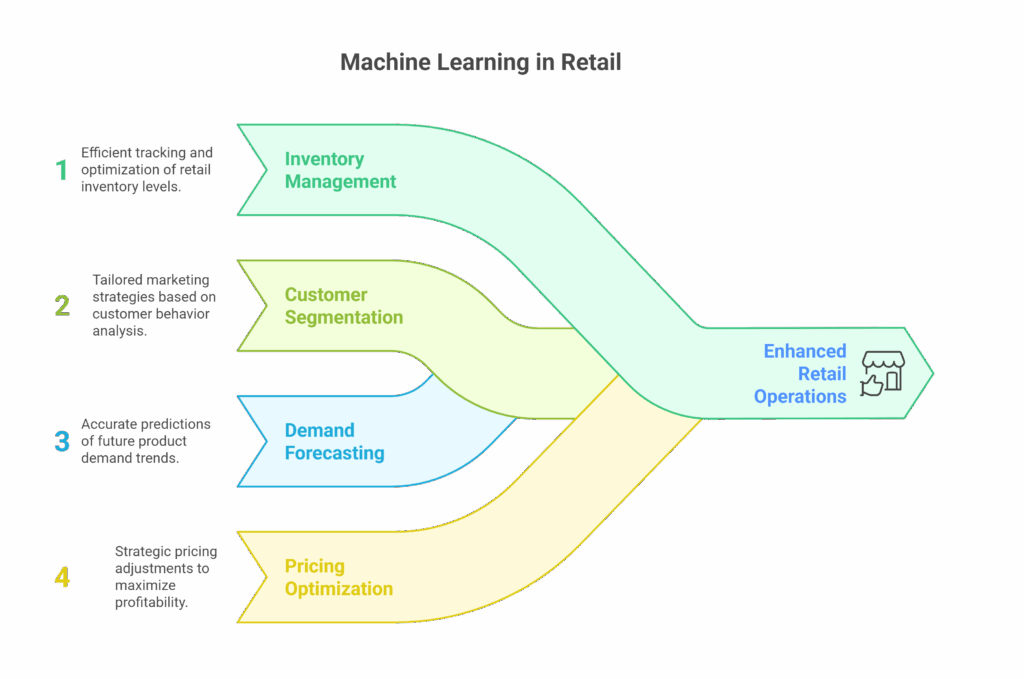

Introduction – The Retail Industry’s Data Goldmine
Retailers today operate in an environment where every transaction, every click, and every interaction generates valuable data. From online shopping carts to in-store footfall sensors, the retail sector is sitting on a goldmine of information. The challenge? Turning this raw data into actionable insights.
Machine Learning (ML) plays a crucial role in uncovering patterns, predicting outcomes, and automating decision-making in retail. Whether it’s improving the customer experience, managing inventory, or preventing fraud, ML is reshaping how retail businesses operate.
This blog simplifies 20 powerful ML use cases in retail with real-world examples, making them easy for anyone to understand—even without a technical background.
Inventory Management and Demand Forecasting
Managing stock is one of the biggest challenges in retail. Too little stock leads to missed sales opportunities, while overstocking increases storage costs and the risk of unsold goods.
Machine Learning models help by forecasting future demand based on historical sales data, holidays, local events, trends, and even weather conditions. These models can automatically learn from patterns and improve over time.
Example: A fashion retailer uses ML to predict the exact number of winter jackets to stock in each store based on location-specific trends and past years’ demand.
Impact: Reduces excess inventory, lowers storage costs, and ensures the right products are available when customers need them.
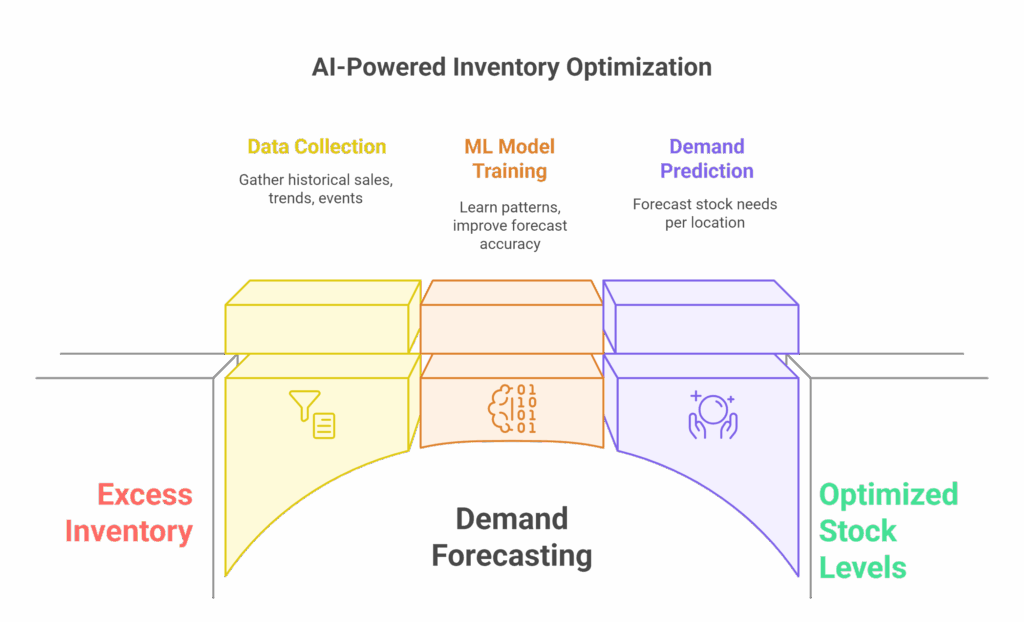
Personalized Product Recommendations
ML helps retailers show the right product to the right person at the right time. It does this by analyzing browsing history, purchase behavior, and demographic data to make accurate suggestions.
Example: Amazon suggests items based on your previous purchases and what similar users bought, increasing your chances of buying more.
Impact: Improves customer experience, increases average order value, and boosts conversion rates.
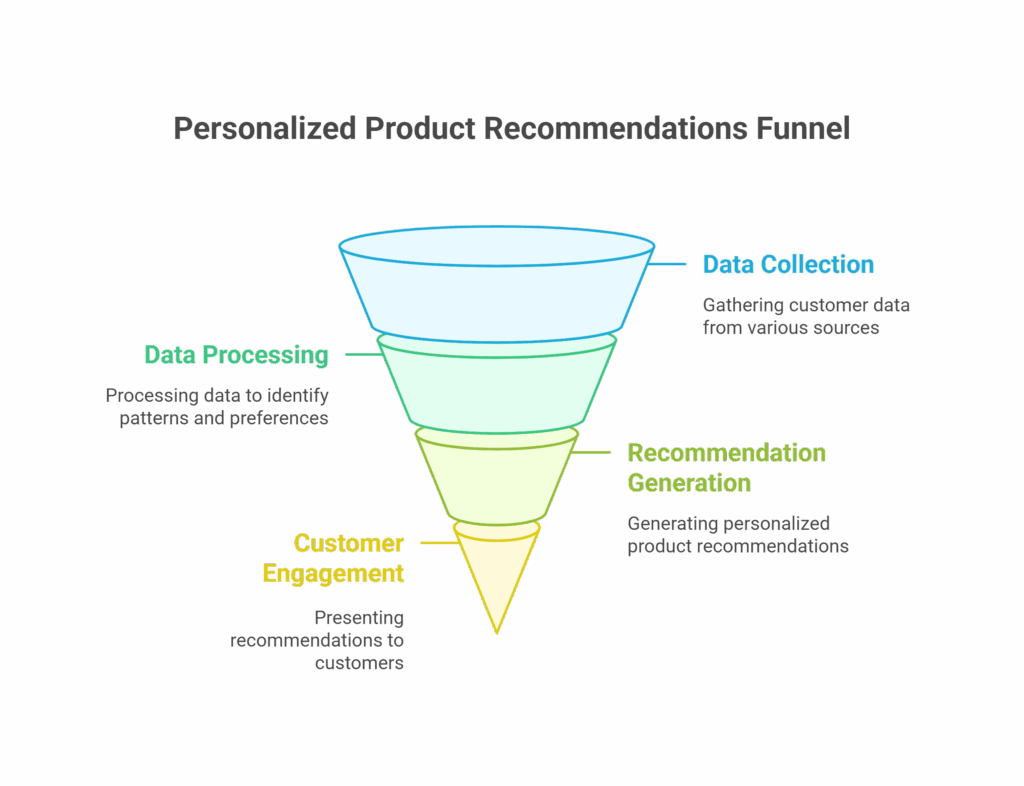
Dynamic Pricing Strategies
Prices that change in real time may seem magical—but it’s just Machine Learning. ML tools track market conditions, competitor pricing, inventory status, and customer behavior to adjust prices dynamically.
Example: Online retailers offer limited-time flash sales or change product prices during high-demand hours.
Impact: Maximizes revenue, keeps pricing competitive, and responds swiftly to market changes.
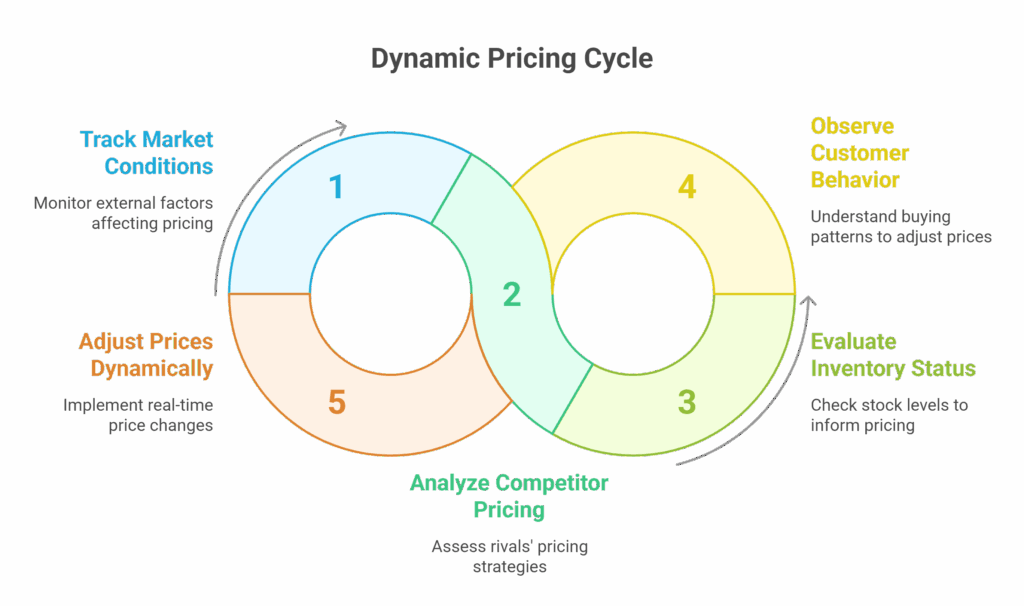
Customer Segmentation
Not all customers are the same. ML uses clustering algorithms to group customers into segments based on shared characteristics like shopping frequency, average spend, and preferred categories.
Example: A retailer categorizes customers as “frequent spenders,” “bargain hunters,” or “holiday-only shoppers.”
Impact: Enables tailored promotions, more effective advertising, and better customer retention strategies.

Fraud Detection and Prevention
ML can detect fraudulent behavior that may go unnoticed by traditional rule-based systems. It does this by learning from past fraud patterns and recognizing anomalies in real time.
Example: An online store gets alerted when a new user places multiple high-value orders within a short time from different IP addresses.
Impact: Protects business from losses and improves trust and safety for customers.
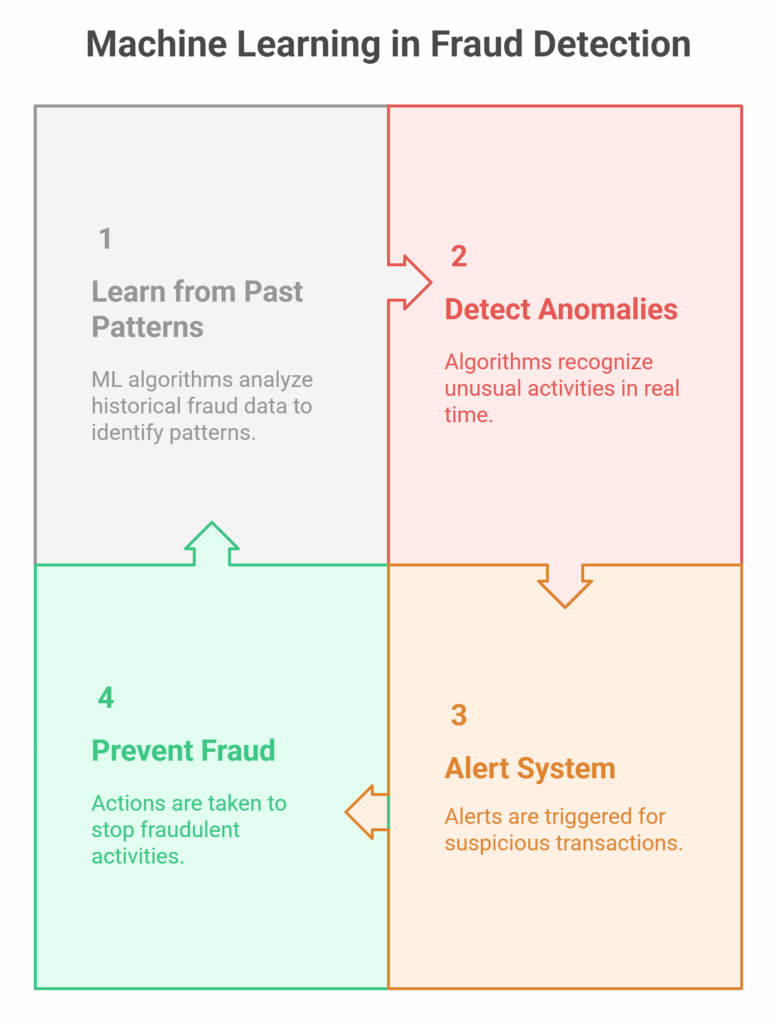
In-Store Experience Optimization
Smart cameras and sensors track how customers move through a store. ML analyzes this data to improve store layout, product placement, and staffing decisions.
Example: Retailers rearrange displays or deploy more staff at busy sections to reduce wait times.
Impact: Enhances customer satisfaction and increases in-store sales.
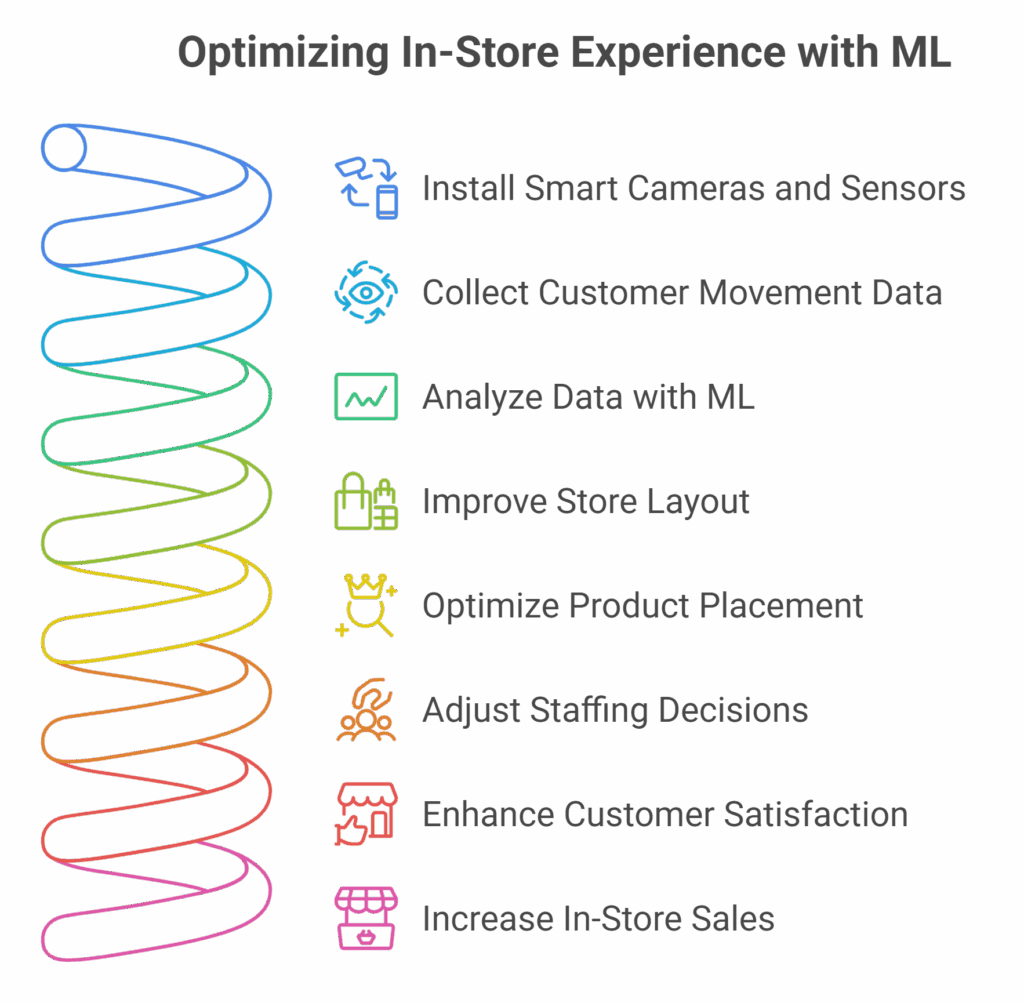
Chatbots and Virtual Assistants
ML-powered chatbots can answer FAQs, recommend products, help track orders, or escalate issues to human agents.
Example: The H&M chatbot helps customers choose outfits based on their style and budget.
Impact: Reduces response times, increases engagement, and saves customer support costs.
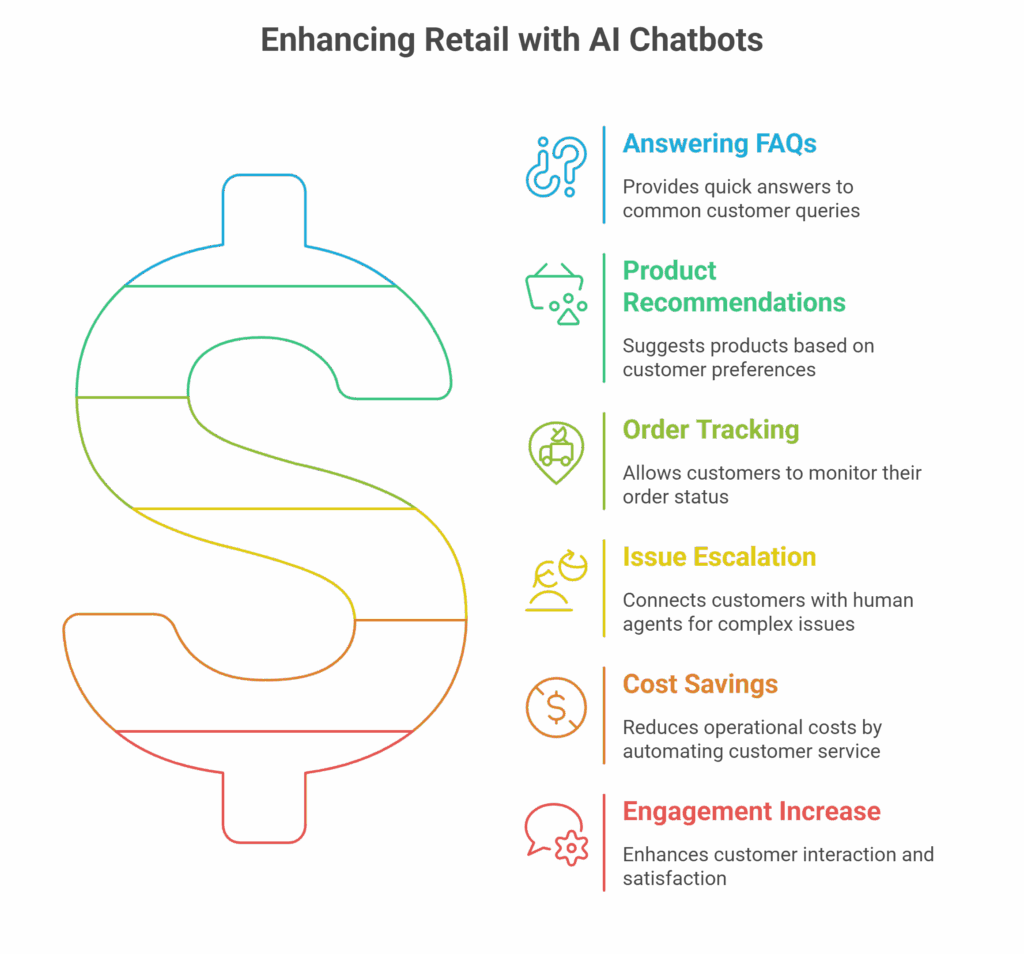
Return Prediction and Reduction
Returns can eat into profits. ML identifies patterns that lead to returns—like specific product types, sizes, or customer segments.
Example: If certain shoe sizes have high return rates, the system can highlight sizing issues or prompt shoppers to review sizing charts.
Impact: Reduces return rates, increases customer satisfaction, and saves shipping/restocking costs.
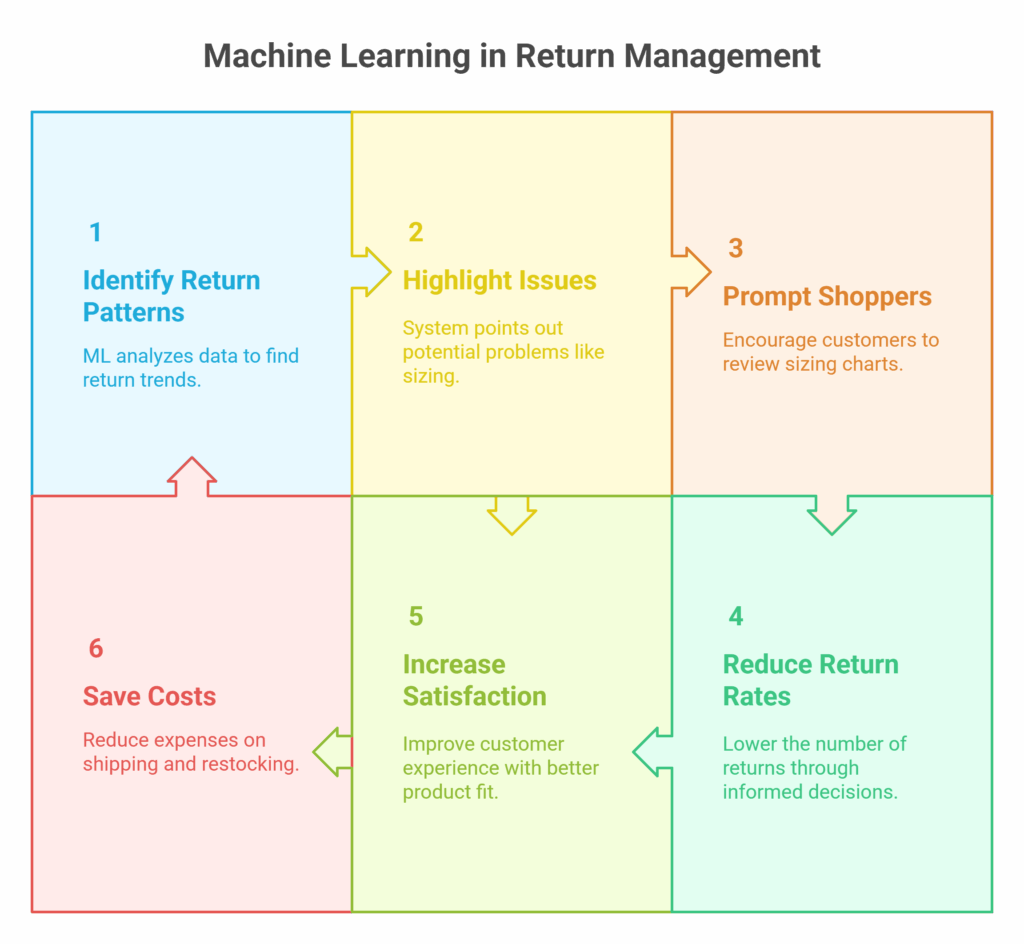
Sentiment Analysis on Customer Feedback
Retailers collect feedback through reviews, social media, and surveys. ML can analyze this unstructured data to detect patterns in sentiment.
Example: A sudden spike in negative feedback about delivery speed triggers internal checks.
Impact: Proactive customer service and better-informed decision-making.
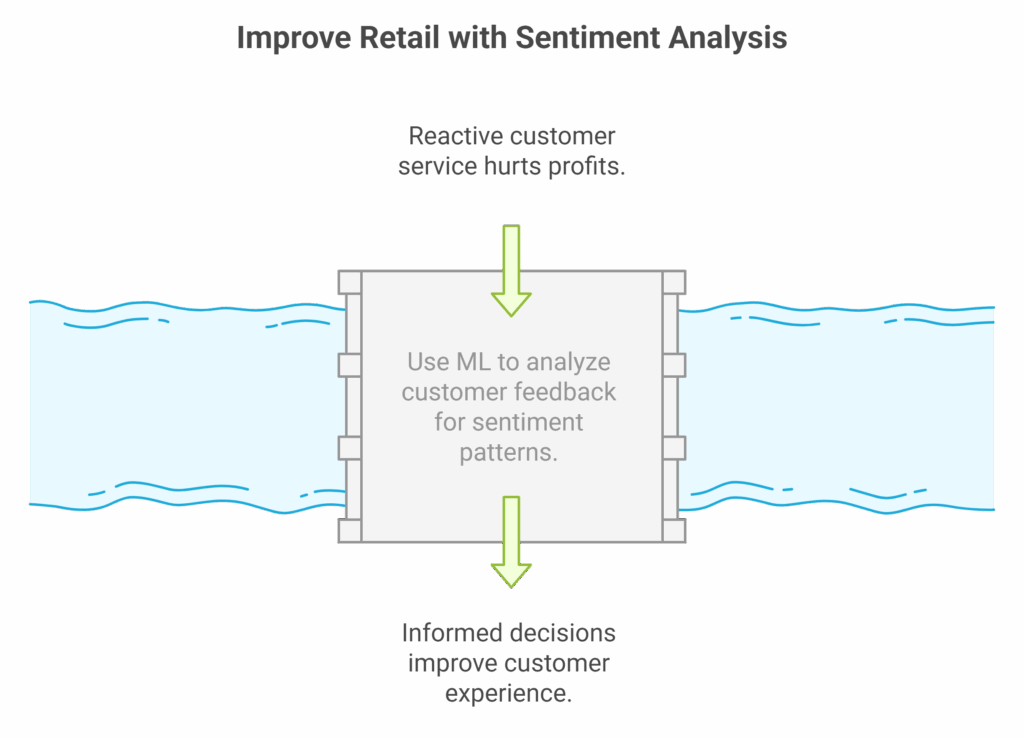
Supply Chain Optimization
Delays in supply chains can be costly. ML models predict delays, suggest better routes, and optimize vendor selection.
Example: A store shifts to a local supplier during floods affecting its usual shipping route.
Impact: Improves efficiency, ensures stock availability, and reduces risk.
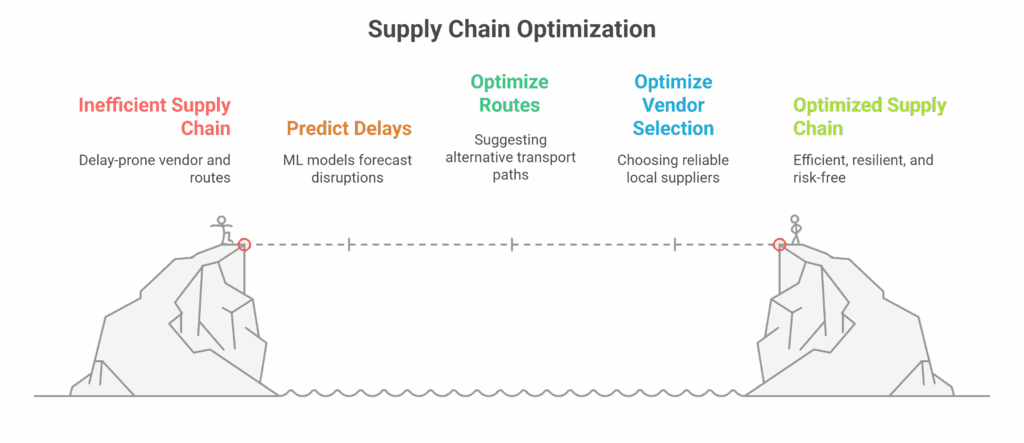
Visual Search and Style Matching
With ML-powered visual search, customers upload a photo and find similar products.
Example: Apps like Myntra let users snap a photo of a celebrity look and find similar items instantly.
Impact: Increases product discovery and enhances user experience.
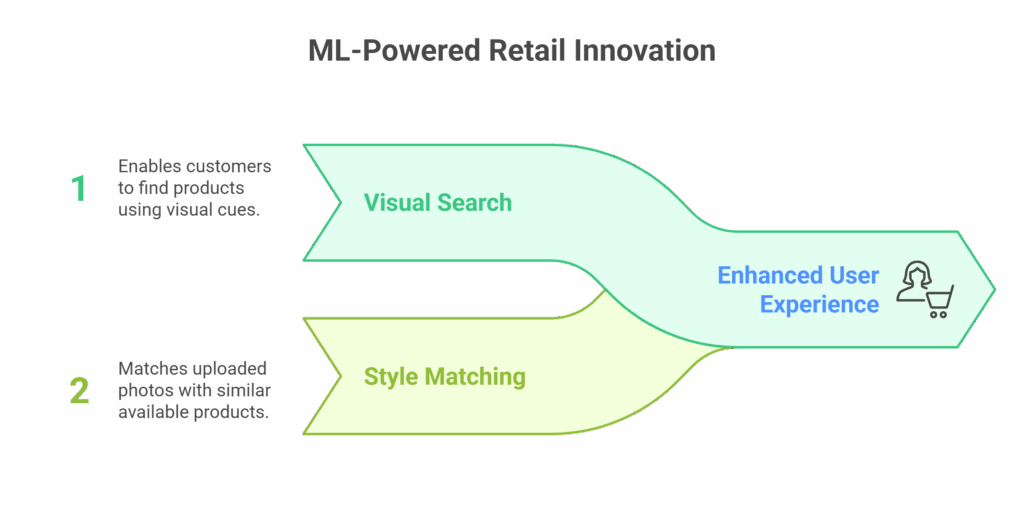
Store Location Planning
Deciding where to open a new store is strategic. ML considers location demographics, traffic patterns, and competitor density to find optimal spots.
Example: A convenience store chain uses ML to identify underserved areas with high foot traffic.
Impact: Maximizes footfall and minimizes investment risk.
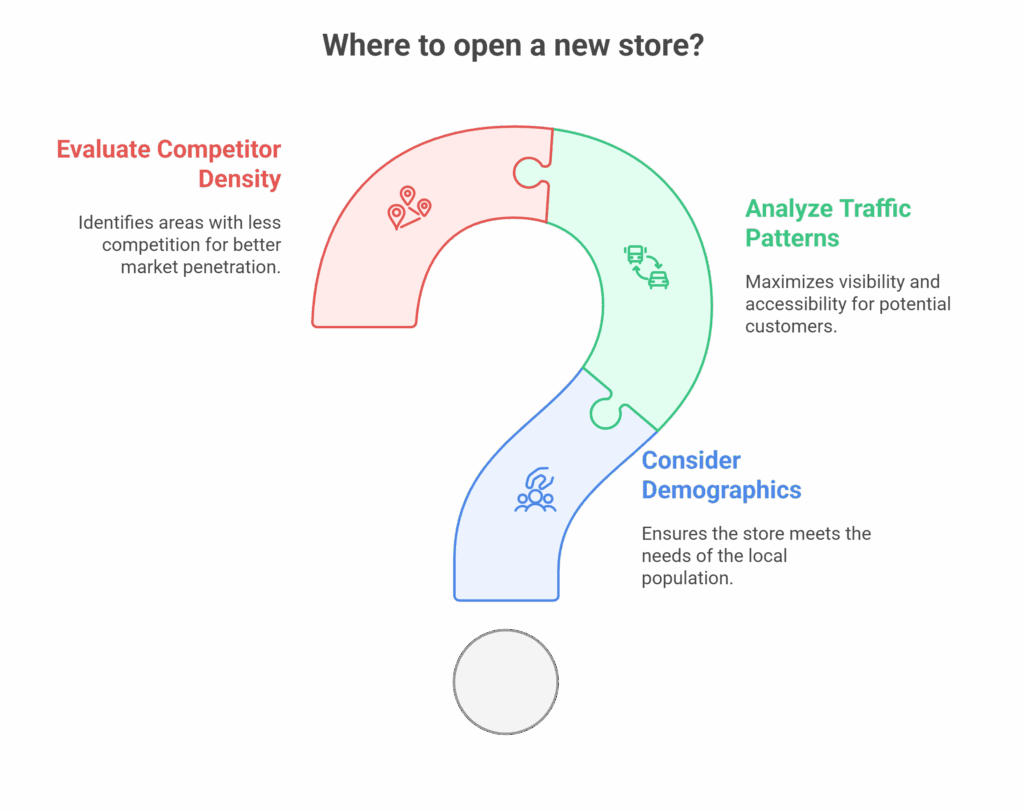
Shelf Space and Planogram Optimization
Computer vision combined with ML monitors shelf space in real time to track empty spots and suggest rearrangements.
Example: Detecting that a popular item is out of stock and alerting staff instantly.
Impact: Prevents lost sales and ensures high-demand products are always available.
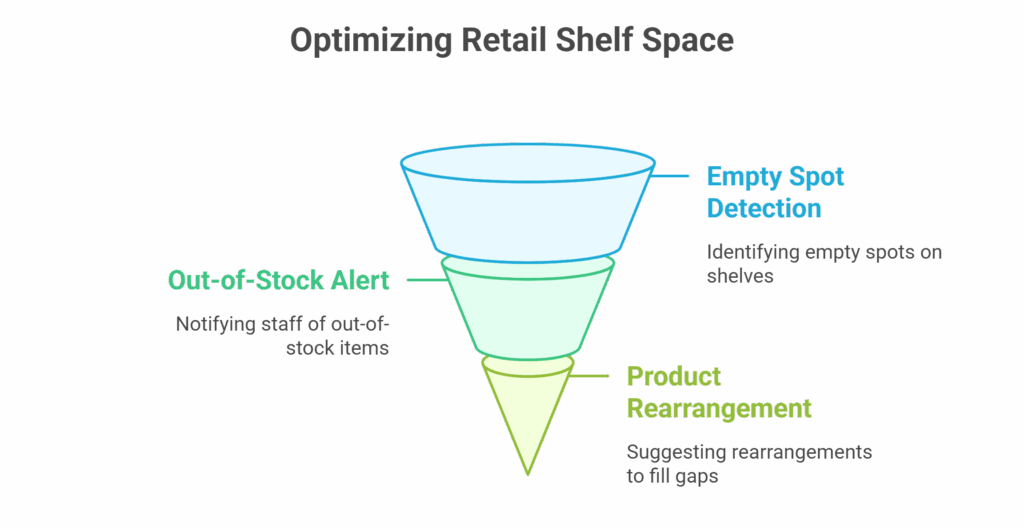
Email and Notification Campaign Optimization
ML determines the best time to send marketing messages and which content appeals most to each user.
Example: A customer receives a personalized coupon just before payday, when they’re most likely to shop.
Impact: Higher open rates and better ROI on marketing.
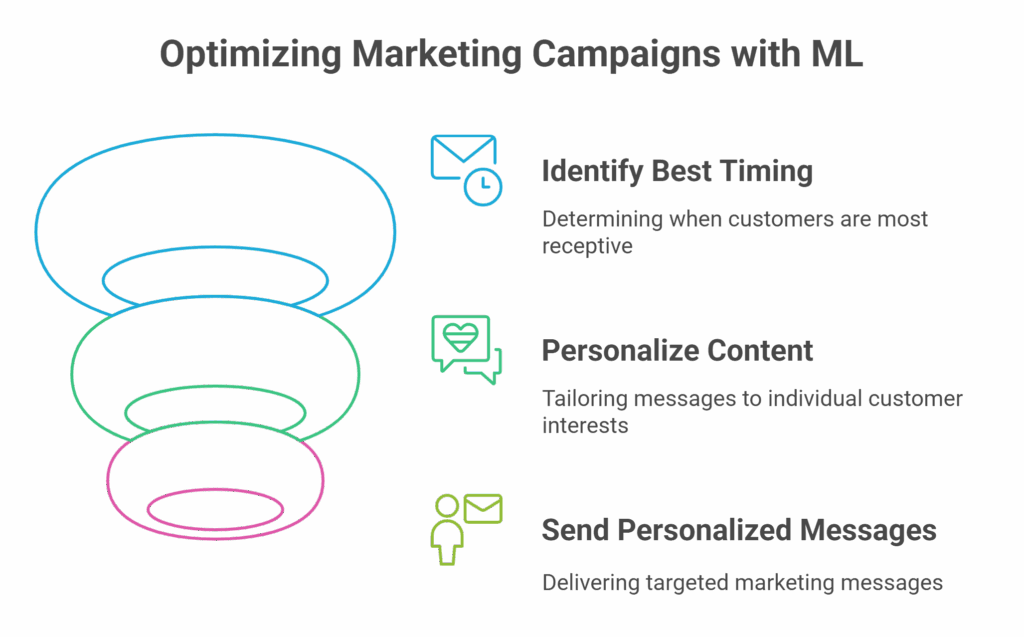
Abandoned Cart Recovery
ML models predict who is likely to abandon carts and why, then automate recovery actions like reminders or offers.
Example: A user who frequently abandons carts gets a discount email within 30 minutes.
Impact: Converts more abandoned carts into completed purchases.

Voice Commerce and Smart Assistants
Voice-enabled devices allow shopping using natural language. ML powers voice recognition and context understanding.
Example: A customer reorders household goods by simply saying, “Alexa, order laundry detergent.”
Impact: Simplifies shopping and creates a futuristic brand image.
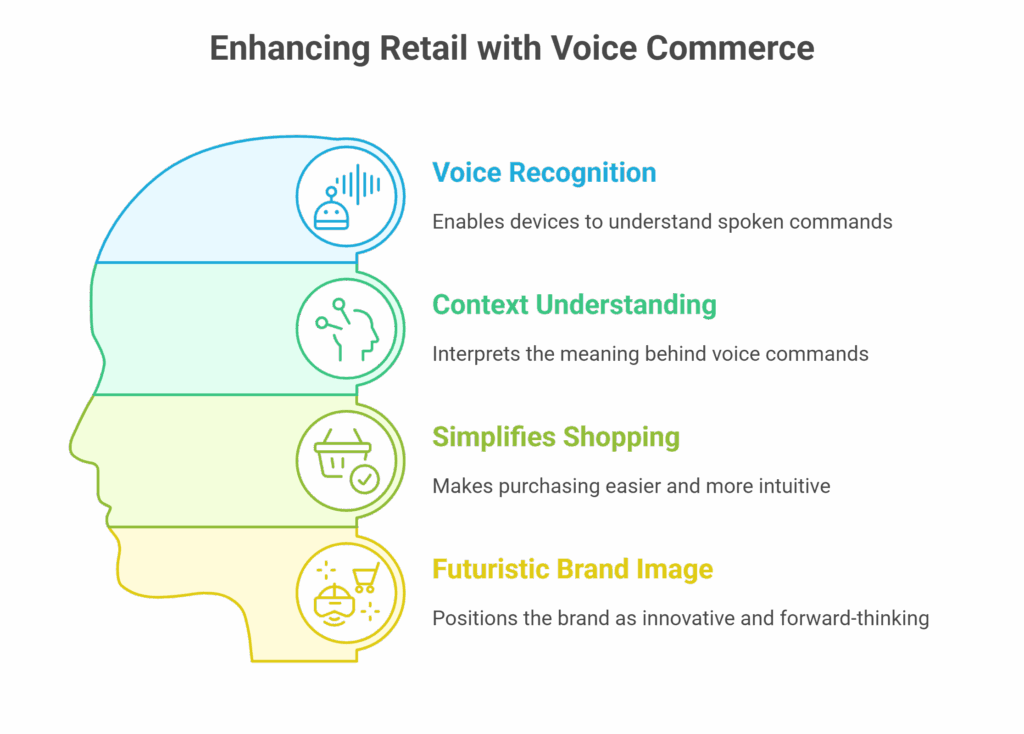
ML in Retail Security and Theft Prevention
ML models use CCTV footage to detect suspicious activity and alert staff in real time.
Example: A system detects a person loitering near high-value goods for a long time and sends a notification.
Impact: Reduces shoplifting and improves overall security.
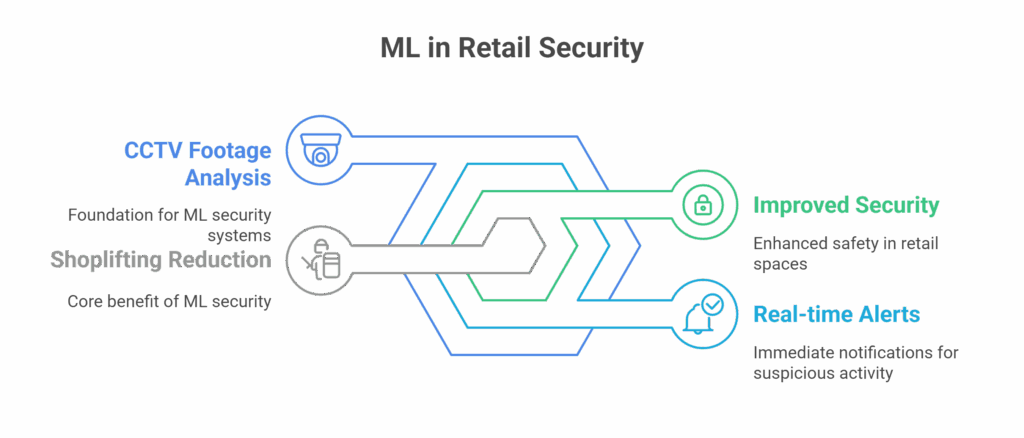
Sustainability and Waste Reduction
Retailers can use ML to forecast demand more precisely, helping reduce overproduction and waste.
Example: A grocery chain forecasts expiry dates and adjusts promotions to sell perishable items before spoilage.
Impact: Cuts waste, saves money, and supports environmental goals.
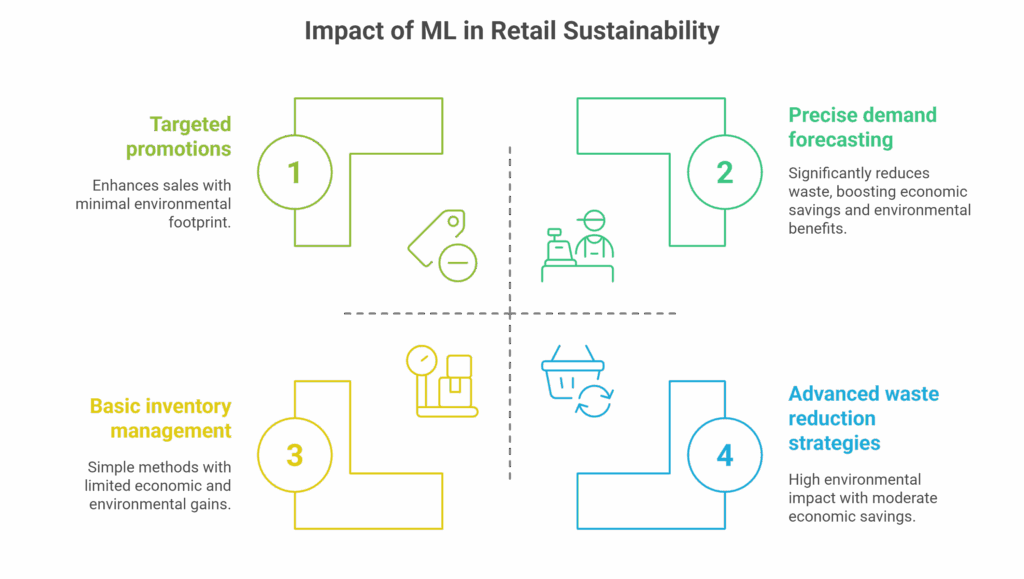
Conclusion – ML is the New Retail Assistant
ML has transformed from a buzzword to a must-have in modern retail. From inventory to marketing, every area benefits from data-driven intelligence.
The best part? You don’t need to be a tech expert to start using ML. Many tools now offer no-code or low-code solutions that retailers can implement easily.
Start small with one problem area.
Measure results and learn.
Scale gradually.
“ML in retail isn’t about replacing humans. It’s about helping them make better, faster decisions.”
Let this be your guide to embracing ML in retail—one use case at a time!
